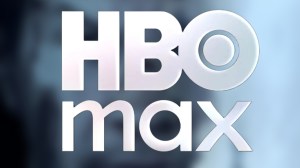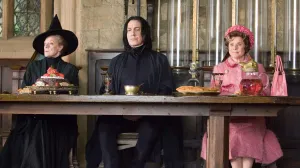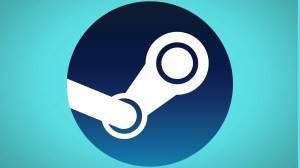This afternoon at New York Comic Con, DC Comics luminaries took to the stage for a DC Nation panel, helping to chart the future of the brand. Hosted by DC co-publisher Dan DiDio, the panel included legendary artist Jim Lee; Batman artist Tony Daniel; Eisner-winning writer Tom King; Hugo Award winner Nora Jemisin; and Batman: Damned artist Lee Bermejo. Here’s the official synopsis: “For more than 80 years DC has built a storytelling legacy full of iconic characters, immersive experiences and memorable tales that have thrilled and inspired generations. Spend some time with the voices behind these incredible stories and hear about their plans to continue this hallowed tradition at DC.”
Videos by ComicBook.com
DiDio began the panel by handing sketch pads to both Lee and King, telling fans that at the end of the panel, there will be a Q&A session and that fans who ask questions can get sketches from either of the two men.
He launched into the panel by asking Daniel what it was like to return to Batman again.
“Each [writer] is different, and I learn something different from each writer,” Daniel answered, saying that Grant Morrison’s Batman is more technical and instructive, while King’s is more collaborative. “For me, the challenge is not to make it different but to make it better….The challenge is real, but it’s something I look forward to.”
DiDio asked Jemisin what it was like transitioning from prose into comics; she said that it was a challenge, but that she bought the 2000AD Scriptbook to help her build a coherent style.
“Gerard Way came to me with an idea, and his idea included creating a completely new world within this universe,” Jemisin said of Green Lantern: Far Sector. “I wouldn’t be working with Earth at all; I would be able to literally create a whole new society from scratch, and that’s what I wanted to do.”
DiDio asked Bermejo whether he had to change his style at all to accommodate the format and size of Batman: Damned.
He said that he started writing the book at standard comics size, but that after about 18 pages, the format changed and he changed the pages he had already done.
“It just feels like you’re looking at something really widescreen,” Bermejo said. “I feel like you can fall into the pages, at least for me as the artist, a little bit more with that little bit of extra space that’s allowed.”
DiDio asked King how he felt about “City of Bane,” the culmination of his Batman run.
“I can’t believe that you guys let me tell and 85-issue long story that’s basically a love story between Catwoman and Batman,” King said. “People talk about corporate comics and how this environment restrains the artist. I feel the complete opposite.”
DiDio asked for a little background on Batman/Catwoman, and King said, “When I first talked to Dan about this six years ago, we decided that there would be two themes: Bane is bad, and Batman loves Catwoman….When I grew up, I read The Dark Knight Returns over and over again. I thought it was the pinnacle of comics. I can’t do that — I really can’t, I’ve tried — but I can attempt. This is my attempt to do that Frank Miller treatment of Batman.”
Lee discussed an upcoming short story he is doing with Brad Meltzer, about a soldier who won the Medal of Honor in Afghanistan and is one of the only people in generations to do so while alive. He said that Meltzer pitched the story, and Lee just couldn’t say no.
“It’s a brilliant story; it starts in the world of fiction, within the world of Batman, and then it segues into this real-life story of what this guy did over there,” Lee explained. “It’s beautifully written…I’m just happy to be back, drawing short stories and working with Brad is an opportunity I couldn’t pass up.”
DiDio asked Jemisin when she knew she was going to be into science fiction.
“I started with fairy tales around three and didn’t stop,” Jemisin said, adding that Far Sector takes place in a Dyson Swarm, and takes place in a society that has three different alien races who typically get along but are having some issues right now. They request a specific Green Lantern to come and do some “Earth-style helping out with the problems they’re starting to have.”
Daniel was asked what Batman characters he would like to do more drawing; he said Catwoman, Scarecrow, and Mr. Freeze. When DiDio asked Bermejo if he had considered writing more of his own work, and Bermejo said yes, but like his art, it takes a long time.
King related the story of how he and DiDio hatched Strange Adventures more or less by being told “do it again” after Mister Miracle.
“We could have done Mr. Miracle II: The Return of Mr. Miracle, but we wanted to push ourselves and we wanted to be artsy and fartsy,” he said. “We’re doing a series about Adam Strange, who’s a SIlver Age character who existed in the past and has a rocket pack…and we’re doing it about the myth of him and whether it’s real.”
He added that the idea is to comment on the times, and the way heroes are in short supply and often not as heroic as you thought.
Jemisin said that she heard from Way after she won her third Hugo, and that as soon as she heard his idea, the world of Far Sector immediately started to spin itself out in her head.
“The ring is one of many tools that are able to do the job, but at the end of the day, she’s in a society that has tools and technology that are almost as powerful….She’s there to solve problems with willpower, but she’s not using willpower just in the form of the ring,” she said.
“I thought I did play against type, because I did a book called Batman: Noel a few years ago,” Bermejo said. “That, for me, was kind of my attempt at levity and I thought it was much lighter than it must have actually com eout. Everybody has an aesthetic, and they gravitate to projects that appeal to that aesthetic. Some people are able to play in mutliple genres and have difference in tonality, and I feel really comfortable in my aesthetic, and I guess that happens to be a little bit darker stuff.”
DiDio asked Daniel how he handles Batman when he writes it, versus when he’s drawing for others.
“When I came in to write it, it was right after Grant Morrison, and what was kind of cool was that I was doing Dick Grayson as Batman,” Daniel said. “Writing Dick Grayson as Batman was kind of cool, becuase I got to draw from my own experience filling big shoes….I absolutely loved doing that, I liked having that kind of control, but I work with good writers and I still get to have some creative control, but I love to write. I still write almost every day and I’m pretty fulfilled creatively that way.”
DiDio asked Jemisin how she felt about fitting into continuity.
Even though her book is “outside of the 3600 sectors that the Guardians usually count and number and maintain,” and she has no recourse if things go wrong, “What I was really kind of hoping for was that if she does someday go back then she can fit into that continuity. I did read the Geoff Johns books; I read the DC Rebirth…just to make sure I knew what I was writing. She’s still a Green Lantern and I wanted to make her feel like a Green Lantern.”
“When I launched The New 52, there was a lot of excitement that came along with that,” DiDio said. “What might have slipped up was the fact that we started everything brand new, but then once we started getting in, we didn’t spend the same amount of time as we did at the start figuting out what fit into continuity and what didn’t.”
He said that if comics aren’t doing better at building universes than film and TV, he feels like it’s a failure — and projected an image of The DC Timeline, which looks like a Google Doc that gives a definitive organizational timeline that makes sense from the start of DC until today.
“We’re reintroducing aspects of our history back into it with the return of the Justice Society of America, all the way to the Legion of Super-Heroes,” DiDio said. He explained that reboots and relaunches happen because continuity becomes too complex to follow.
He said that Wonder Woman will be the first superhero whose arrival in America touches off the launch of the JSA. Superman was the first hero of the second generation of heroes, and then there are other eras beginning after the events of Crisis on Infinite Earths.
A fan asked Jim Lee how the delays in Doomsday Clock changed the way they plan to reintroduce the JSA and other elements of DC history. Lee answered that “it certainly gave us a lot of time” to do it, and that everyone on the team just has to coordinate and communicate.
“I think that’s part of the buy-in when you work in the DC Universe is that you realize you are in an immersive, shared universe, and sometimes you have to work with others,” Lee said.
“We have an incredible staff that loves this stuff,” Lee said when asked about the process of crafting the timeline. “We have an editorial team and they put a lot of time into this.” He also said that DiDio is “never this happy,” and that it’s the timeline that’s got him excited.
The next question was about whether keeping things on schedule ever creates conflict between writers and artists.
King jokingly started lecturing Jim Lee on the nature of art, saying that he should stop drawing good, and start drawing poorly and leting the audience fill in the good in their minds.
The next question was whether there was a character or story that they wish they could create. Lee said he’s always wanted to do a run on Legion of Super-Heroes. Jemisin said that she didn’t have any she could talk about publicly.
The last question was whether anybody had a specific character who was outside of their comfort zone.
“Most of them,” Bermejo joked.
“I suck at Wonder Woman,” King said. “I’ll improve; I swear. When I have the trinity together, Batman goes ‘mmm,’ Superman says something nice, and then I get to that point…” and get bogged down, he explained.
“Superman I always found kind of hard,” Daniel admitted. “I can’t decide how I want him to look, and I don’t have a lot of experience with people flying around.”
“Characters are characters,” Jemisin said. “I would take pretty much any character and treat it as challenge accepted.”
Lee said that fantasy is something he would love to do. “I would have to adjust the art style completely becuase the way I think that should be depicted is completely different from the way I draw superheroes.”








